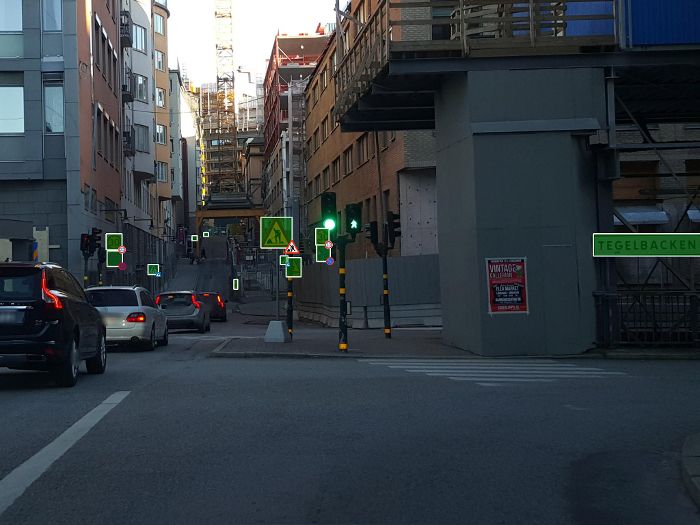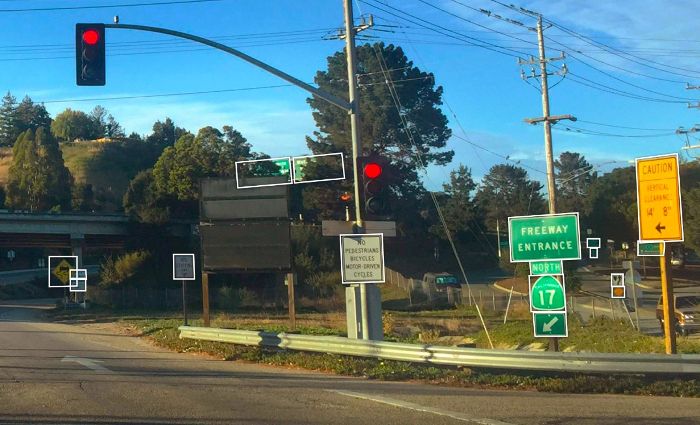The developers of a street-level imagery platform that uses computer vision and artificial intelligence (AI) to create detailed maps, Mapillary, has released the world’s largest traffic sign recognition dataset to teach autonomous vehicles (AVs) to understand roadside signage.
The first of its kind for global traffic sign recognition, Mapillary’s new dataset consists of 100,000 labeled images from all over the world, making it the world’s most diverse publicly available dataset. The images cover diverse worldwide traffic sign classes and boast great variability in weather conditions, times of day when the images have been taken, different viewpoints and camera sensors, addressing some of the greatest concerns in teaching AVs to see and understand traffic signs. Recent research shows that inexpensive cameras have the potential to replace lidar in teaching AVs to understand their surroundings, which would reduce the cost of introducing self-driving vehicles by tens of thousands of dollars. Although traffic sign recognition technology is fairly common already, this is the first time such a large and diverse dataset has been launched for anyone with a license to train their own traffic sign recognition systems.

The Swedish startup has a collaborative approach to data collection, meaning that all 570 million images on the Mapillary platform have been uploaded by individuals and companies from across more than 190 countries worldwide. Processed using AI and computer vision, the company combines images from any camera, including smartphones, tablets and ‘dash-cams’, into a visualization of the world that generates data for improving maps, developing cities, and advancing the automotive industry. Mapillary’s tools enable anyone to collect, share, and use street-level images. From this massive store of visualizations, 100,000 of the images have been selected for the Mapillary Traffic Sign Dataset. More than 300 different traffic sign classes have been verified and annotated, resulting in more than 320,000 labeled traffic signs across the images. Over 52,000 images have been fully verified and annotated by humans, with the remaining images annotated partially through Mapillary’s computer vision technology.
“Carmakers typically go out and get their own data to train their algorithms, but that means that they have low levels of variability in their training data,” explained Emil Dautovic, VP of automotive at Mapillary. “When it comes to teaching cars to see, more diverse input data means better results. There hasn’t been anything like the Traffic Sign Dataset available on the market before, and that’s why we built it.”

Dautovic continued, “The strength in the Traffic Sign Dataset really lies in the diversity of the input data. There are only a few other datasets on the market, and none of them has imagery from all over the world, simply because it would take too much effort for one, single player to get images from such a diverse set of locations on a global scale. We don’t actually need to do that at Mapillary, since all the images have been uploaded to our platform by people across the entire world. With this dataset, we’re hoping to come closer to solving the problem of self-driving from cameras only, one step at a time.”





